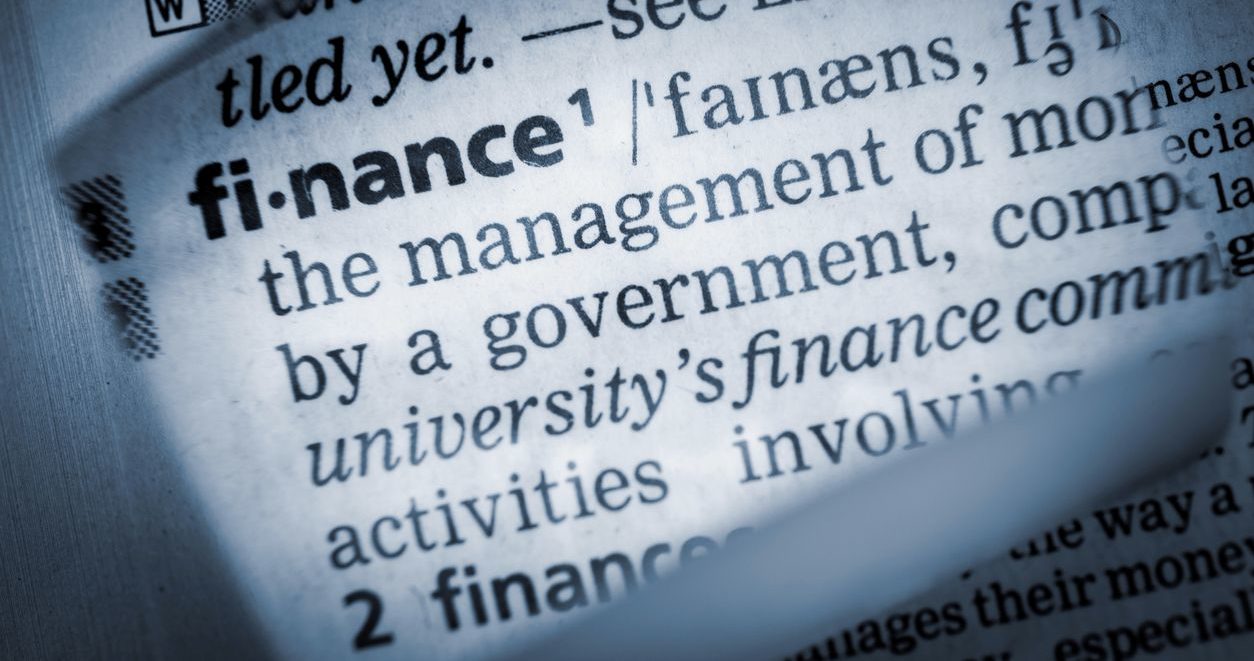
What do all those acronyms and terms mean, anyway?
Don’t know what a reverse mortgage is? How about a loan-to-value ratio? Not sure of the difference between a home equity loan and a home equity line of credit? If some of these financial terms are foreign to you, don’t despair. The world of finance has a language all its own, but you can better understand what’s going on if you know what a few key terms mean.
Amortization
Amortization is a method of calculating the value of assets over time, spreading the cost of an intangible asset (like a loan) over its “life,” or term. For loans, amortization refers to the amount of principal and interest paid each month over the course of the loan term.
Annual percentage rate (APR)
The APR refers to the yearly rate lenders charge borrowers to borrow money, or the yearly rate an investment earns. It includes fees and additional costs associated with the transaction, but does not include any compounding. The APR is helpful in comparing loans or investment products.
Asset
An asset is a resource that a person or business owns, and which has an economic value. Assets may be money, property or land. For most individuals, their biggest financial asset is their home.
Bankruptcy
Bankruptcy is a legal proceeding that relieves individuals and businesses of their debts and repays their creditors. It’s a useful tool when you are financially unable to repay your debts. Depending on the type of bankruptcy, you may be able to retain your home while wiping other debts from the record.
Blanket mortgage
A blanket mortgage is a type of mortgage that covers multiple properties, typically used by real estate developers. The group of properties serves as collateral for the loan.
Cash-out refinance
A cash-out refinance is a mortgage refinancing option that lets a homeowner convert home equity into cash. The homeowner takes out a new mortgage for an amount that is higher than what they owe on the existing mortgage and they receive the difference in cash.
Compound interest
Compound interest is the interest on savings calculated on both the initial principal (deposit) and the accumulated interest from previous periods. Interest can be compounded on any frequency schedule, from continuous to daily to annually.
Conventional mortgage
A conventional mortgage is a home loan available through a private lender, such as a bank, mortgage company or credit union.
Credit score
A credit score is a calculation, derived from information on your credit reports, that rates your credit risk. A higher score indicates you have better credit. A lower score might hinder your ability to get a mortgage or other type of loan.
Debt-to-income (DTI) ratio
Debt-to-income ratio, or DTI ratio, is the percentage of your gross monthly income before taxes you pay on your mortgage, credit cards and other debt. In essence, the DTI ratio compares how much you owe to how much you earn.

FHA loan
An FHA loan is a mortgage backed by the Federal Housing Administration (FHA). These loans typically have lower down payment requirements than do conventional loans.
Foreclosure
Foreclosure occurs when a homeowner defaults on their mortgage, and the lender attempts to recover the amount owed by taking ownership of the property.
Home equity
Home equity measures the difference between what your home’s current fair-market value (what it’s worth) and what you still owe on it. Homeowners can tap into their home’s equity to get cash from home equity loans, home equity lines of credit and home equity agreements.
Home equity agreement (HEA)
A home equity agreement (HEA) provides a homeowner with a lump sum cash payment in exchange for a portion of the home’s future value. Unlike a home equity loan or home equity line of credit, a HEA is not a loan and has more lenient eligibility requirements. For many homeowners, a HEA is an attractive alternative to a loan.
Home equity line of credit (HELOC)
A home equity line of credit (HELOC) is a line of credit based on a property’s current home equity. Lenders often provide it as a revolving line of credit that a homeowner can tap at any time. HELOCs typically have lower interest rates than comparable personal loans.
Home equity loan
A home equity loan is a loan taken against a property’s current home equity. Homeowners receive a lump sum to use for any purpose they may have. The home itself is collateral for the loan.
Homeowner’s insurance
Homeowner’s insurance is a type of insurance that covers damage to a home from storms, fire, theft and other unplanned events. It can pay for necessary repairs, replacement of personal belongings and living expenses if you have to abandon your home for repairs.
Interest rate
The interest rate is the amount above and beyond the principal that a lender charges a borrower. Financial institutions typically state a loan’s interest rate on an annual basis as the annual percentage rate (API).
Investment property loan
An investment property loan is a mortgage used to finance the purchase of a property designed to generate income, such as a rental property.
Loan-to-value (LTV) ratio
The loan-to-value (LTV) ratio compares the loan amount to the appraised value of a home. Lenders examine the LTV ratio to assess a loan’s risk. The higher the LTV value, the higher the risk.

Mortgage
A mortgage is a type of loan used to purchase a house or other type of real estate. Mortgage payments typically consist of the monthly interest payment and an amount used to pay down the loan principal.
Mortgage forbearance
Mortgage forbearance occurs when a homeowner gets behind on mortgage payments, and the lender agrees to a temporarily lower monthly payment or a temporary pause in payments altogether. The amount forestalled still must be paid at a later date, per terms of the forbearance agreement between the lender and the borrower.A portfolio mortgage is a type of loan that stays in the lender’s portfolio and is not offloaded to a secondary mortgage holder.
Private mortgage insurance (PMI)
Private mortgage insurance, also called PMI, is a type of insurance that protects the lender in case the borrower stops making payments on their mortgage. Many mortgage lenders require PMI, typically added to the borrower’s monthly mortgage payments.
Refinance
Refinancing a loan revises and replaces an existing loan with a new one, typically at a lower interest rate. Many homeowners refinance their home loans when interest rates drop.
Reverse mortgage
A reverse mortgage is a loan against the equity in a home. The borrower doesn’t have to make monthly loan payments. Instead, the lender receives ownership of the home when the borrower passes away or sells the home. Reverse mortgages are available to homeowners aged 62 or older with considerable home equity and who want to tap into the equity for living expenses in their retirement.
Secured debt
A secured debt is any debt secured by a tangible asset.
The tangible asset provides reassurance to a lender if the borrower defaults. The lender can recover owed amounts through the possession and sale of the asset. When the loan is for a house, this is known as foreclosure.
Examples include:
- Vehicle loans
- Mortgages, home equity loans, home equity lines of credit
- Some debt incurred in a lawsuit
Seller financing
Seller financing occurs when the seller of a property agrees to handle the mortgage process themselves rather than requiring the buyer to obtain a mortgage from a financial institution. With seller financing, the buyer makes monthly payments to the seller.
Unsecured debt
Unsecured debt refers to any debt that is not tied to an asset. Unsecured debts carry some risk for lenders because there is no underlying asset connected to the loan. That means the lender can’t collect and liquidate the asset in the event of a default. Unsecured debt usually carries high interest rates or short maturity dates. Examples include:
- Credit card debt
- Retail store card debt
- Medical debt (amounts owed directly to medical providers)
- Debt from utility, internet and phone bills
- Personal loan debt
- Some forms of private student loan debt
- Tax debt (overdue taxes owed to the IRS
VA loan
A VA loan is a mortgage loan available through the U.S. Department of Veteran’s Affairs (formerly the Veterans Administration or VA) to veterans, current members of the armed services, and their spouses. VA home loans are typically available with low or no down payment, no PMI requirements and competitive interest rates.
Let Unlock Technologies help you Unlock your home equity
When you need cash, tap into your home equity with a home equity agreement from Unlock Technologies. With an Unlock HEA, you’ll receive cash now in exchange for a share of your home’s future value. Because the HEA isn’t a loan, there aren’t any interest fees or installment payments. You get immediate cash to use as you wish.
Contact Unlock Technologies today to get started.
The blog articles published by Unlock Technologies are available for general informational purposes only. They are not legal or financial advice, and should not be used as a substitute for legal or financial advice from a licensed attorney, tax, or financial professional. Unlock does not endorse and is not responsible for any content, links, privacy policy, or security policy of any linked third-party websites.”


